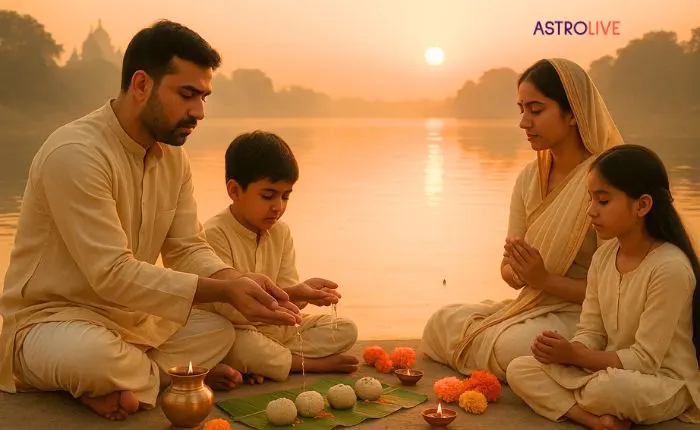In Hindu tradition, Pitru Paksha is a deeply spiritual time dedicated to honoring our ancestors. This period, observed annually, is considered sacred as families remember and express gratitude toward their forefathers through rituals, offerings, and prayers. It is believed that performing the right rituals during this time not only brings peace to the departed souls but also blessings and prosperity for the family.
During pitru paksha puja, devotees perform various ceremonies like offering food, water, and prayers to pay homage to their ancestors. These practices are guided by age-old customs and are performed with devotion and sincerity. Understanding the significance of these rituals helps us connect with our roots while ensuring that our loved ones who have passed away remain at peace.
What is Pitru Paksha Puja?
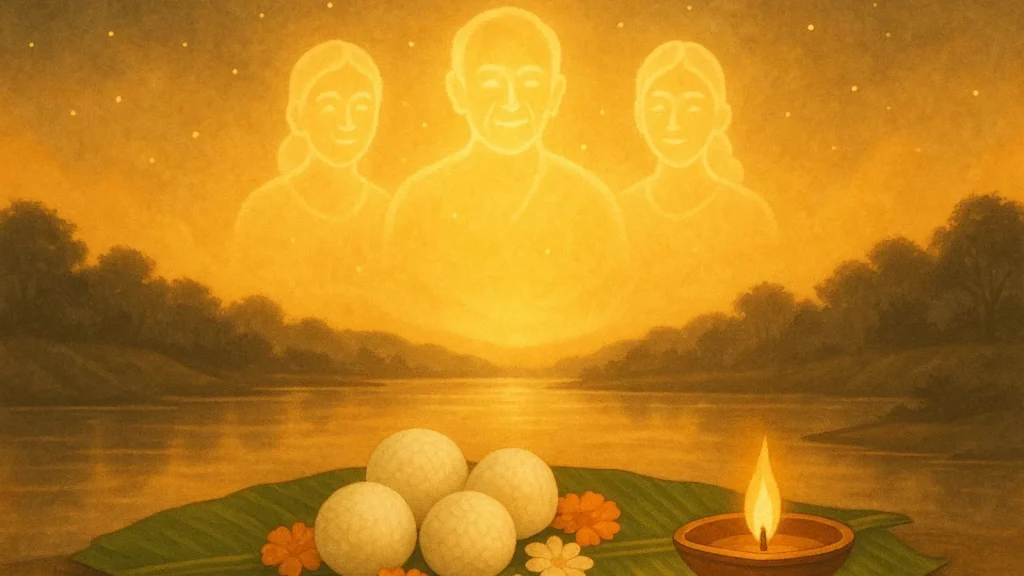
Pitru Paksha Puja is a sacred ritual performed during the 16 days of the Hindu lunar calendar dedicated to ancestors. The word “Pitru” means forefathers, and “Paksha” refers to the lunar fortnight. During this time, families conduct Shraddha and Tarpan rituals to honor their ancestors, offering food, water, sesame seeds, and prayers with devotion.
It is believed that during Pitru Paksha, the souls of ancestors descend to the earthly realm. By performing the Puja sincerely, devotees bring peace and satisfaction to their forefathers while also receiving blessings for prosperity, harmony, and spiritual well-being. This Puja is regarded as a way of fulfilling one’s Pitru Rina (ancestral debt) and remembering the lineage that has paved the way for present generations.
Also Read,
पूर्वजों के आशीर्वाद के लिए पितृ पक्ष कैसे मनाएँ?
Importance of Pitru Paksha Puja
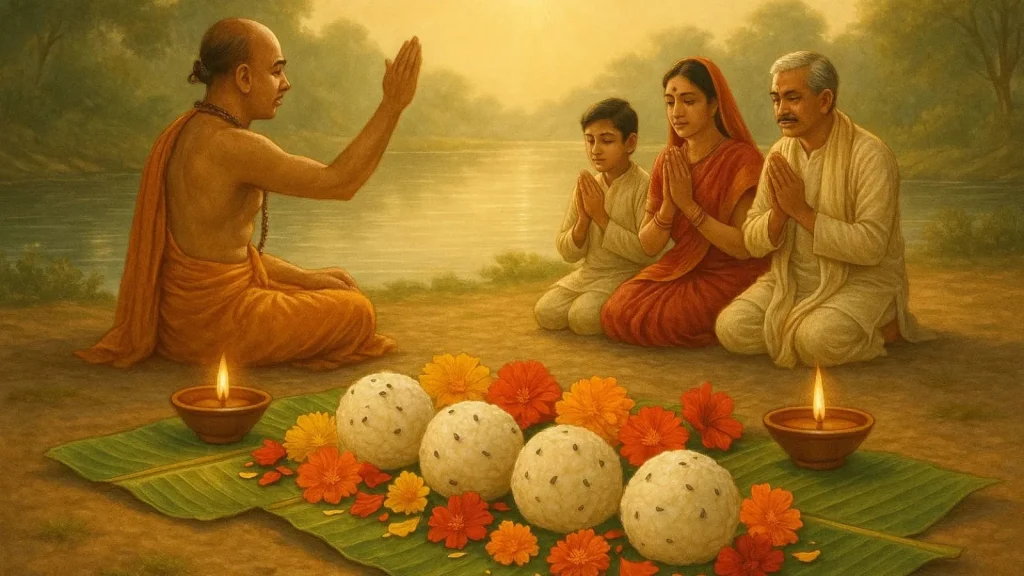
The rituals of pitru paksha puja hold immense spiritual value in Hindu culture. People believe that doing these pujas with true devotion helps ancestors find peace and freedom. In return, families receive blessings for health, wealth, and prosperity. This puja is not only a way to honor the departed but also a reminder for the living to express gratitude and respect toward their roots.
people often perform charity, offer food to priests and the needy, and follow traditional customs with devotion. These acts are considered ways to cleanse negative energies and bring balance to one’s life. By carrying out the rituals properly, devotees feel a stronger spiritual connection with their ancestors, ensuring harmony within the family.
Pitru Paksha Puja Vidhi Explained
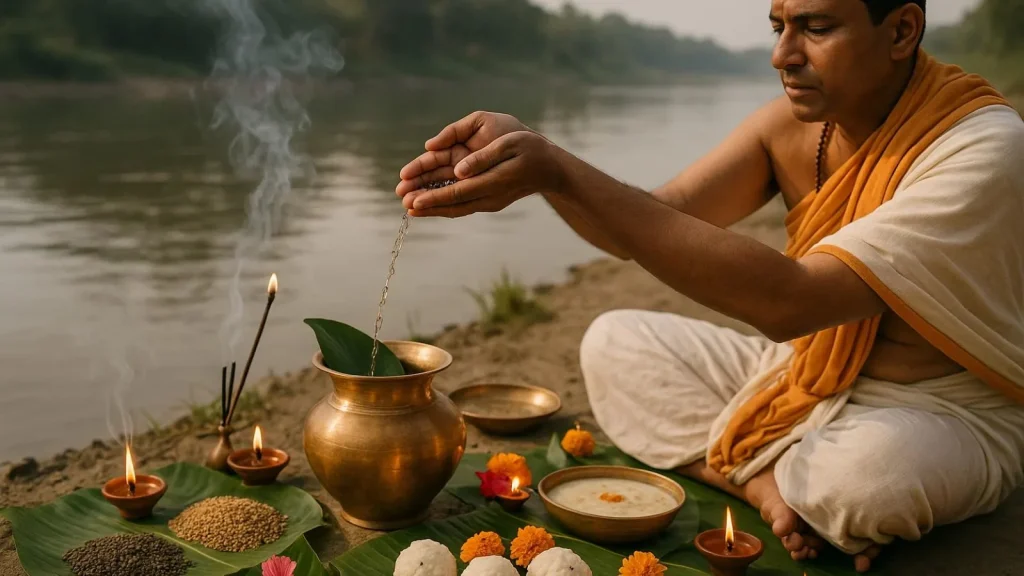
Performing the rituals requires devotion and following traditional steps carefully. The pitru paksha puja vidhi is centered around offering food, water, and prayers to ancestors. Families usually begin the puja with a bath, wearing clean clothes, and preparing special food items, particularly rice, black sesame seeds, and kheer.
A common practice is tarpan, where water mixed with sesame seeds and barley is offered while reciting mantras. The ritual is often followed by pind daan (offering rice balls), which symbolizes providing nourishment to the departed souls. According to श्राद्ध पूजा विधि or पितृ पक्ष पूजा विधि, food is later offered to priests or the needy as part of the tradition, as it is believed to reach the ancestors through these offerings.
Every step in the vidhi carries spiritual meaning, reminding families of their roots and the blessings that flow from remembering their forefathers with sincerity.
Rituals Performed During Pitru Paksha
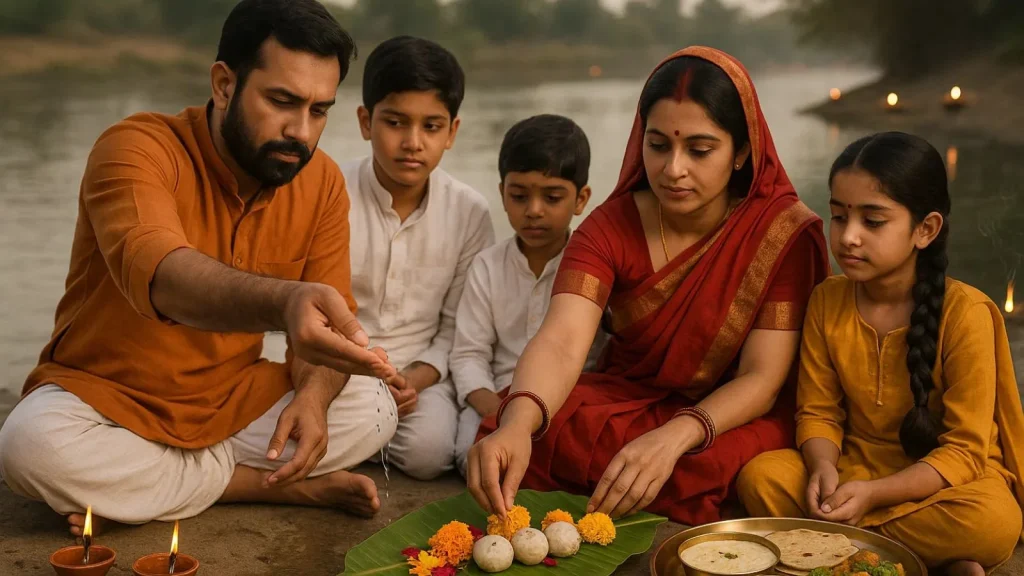
During Pitru Paksha, families follow a set of age-old rituals that help honor their ancestors. One of the key rituals is tarpan, where water mixed with sesame seeds is offered to the ancestors while chanting mantras. This shows gratitude and is believed to bring peace to the departed souls.
Another significant ritual is pind daan, where rice balls are offered as food for the ancestors. Families also prepare a special meal, often including kheer, dal, vegetables, and chapatis, which is later offered to Brahmins or needy people as a way of sharing blessings. These customs during Pitru Paksha are believed to bring prosperity, remove obstacles, and invite harmony into the household.
Across India, the exact rituals may vary by region, but the intention remains the same—showing love and respect for those who came before us.
How To Observe Pitru Paksha For Ancestral Blessings?
Do’s and Don’ts of Pitru Paksha Puja
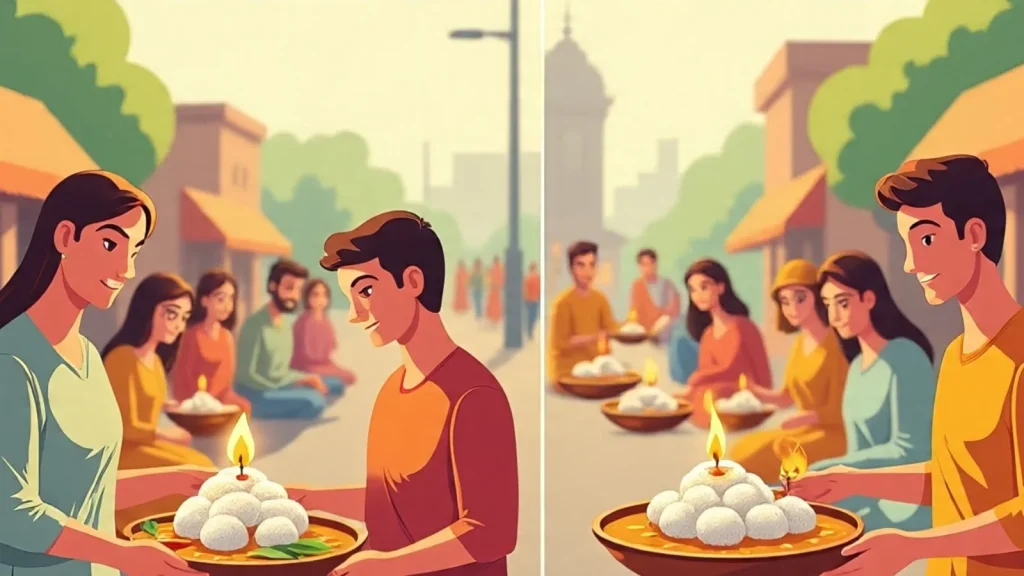
When performing Pitru Paksha rituals, it is essential to adhere to specific customs that maintain the purity and significance of the puja. The do’s include offering food and water with devotion, feeding Brahmins or the needy, and performing tarpan and pind daan with honesty and sincerity. Maintaining cleanliness, wearing simple attire, and reciting mantras during the rituals are also considered essential.
On the other hand, there are practices to avoid during Pitru Paksha. People generally refrain from celebrating festivals, weddings, or buying new clothes and valuables during this time. Non-vegetarian food, alcohol, and indulgence in negative habits are also avoided, as they are believed to disturb the sanctity of the rituals.
By observing these dos and don’ts, families ensure that their Pitru Paksha puja is performed with the right spirit, bringing blessings and peace to both the ancestors and the living.
Significance of Shraddh (श्राद्ध पूजा विधि)
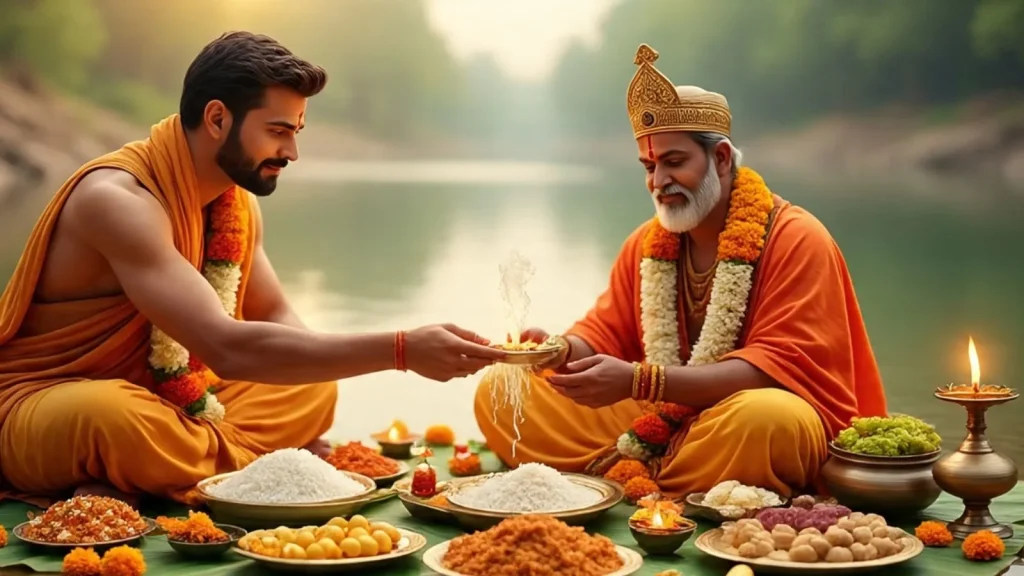
The ritual of Shraddh is an integral part of Pitru Paksha. According to श्राद्ध पूजा विधि, this ceremony involves offering food, water, and prayers to ancestors, symbolizing gratitude and respect. Families prepare specific dishes like rice, dal, vegetables, and sweets, which are later offered to Brahmins or the needy. It is believed that through these offerings, the ancestors are nourished and blessed with peace.
Performing Shraddh during Pitru Paksha is considered highly auspicious, as it is said to bring blessings, remove family obstacles, and create harmony within the household. The ritual also serves as a reminder of the deep bond between generations, connecting the present with the past. By following the पितृ पक्ष पूजा विधि with sincerity, devotees honor their lineage while seeking prosperity and happiness for their family.
Modern Relevance of Pitru Paksha
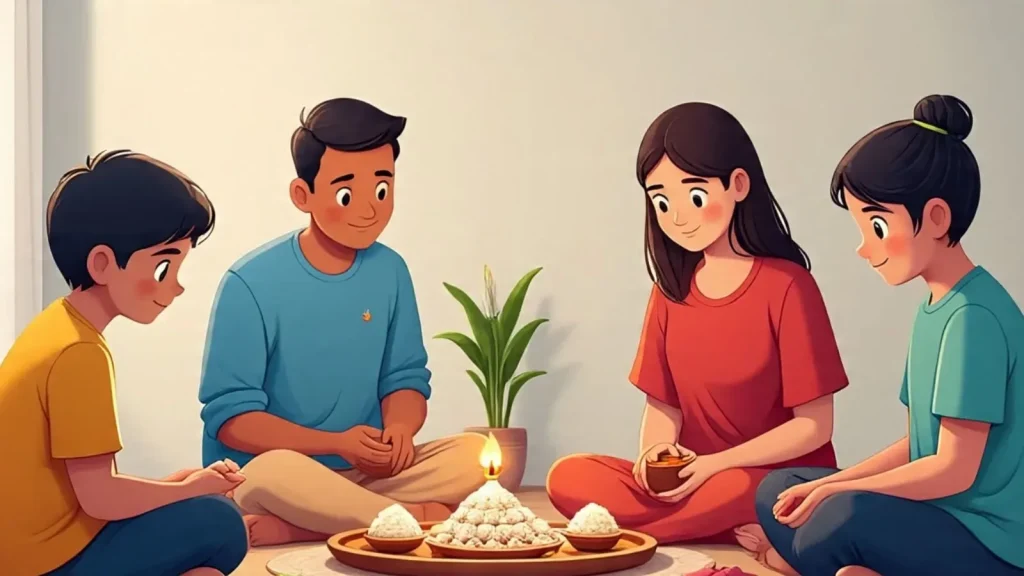
In today’s fast-paced world, many traditions are adapting to modern lifestyles, yet the significance of Pitru Paksha remains as strong as ever. Families may not always be able to perform the rituals in their ancestral villages, but they still find ways to honor their forefathers at home or through priests who guide them remotely.
The essence of Pitru Paksha lies in gratitude, remembering those who paved the way for our lives. Even in modern times, people understand that showing respect to ancestors brings a sense of peace, spiritual connection, and family unity. Some also choose to donate food, clothes, or money to the needy as a modern way of fulfilling the spirit of the rituals.
By blending age-old customs with today’s lifestyle, devotees ensure that the values of remembrance, respect, and gratitude continue to be passed down to future generations.
How AstroLive Can Help You Perform Pitru Paksha Puja

Performing the rituals of Pitru Paksha with the correct method is important to ensure peace for the ancestors and blessings for the family. Many people feel unsure about the exact steps of the pitru paksha puja vidhi or the right timing for the rituals. This is where AstroLive can be your trusted guide.
With AstroLive, you can connect with experienced priests and astrologers who provide detailed guidance on श्राद्ध पूजा विधि and पितृ पक्ष पूजा विधि. From identifying the right day and time to explaining each step of the puja, AstroLive ensures that you perform the rituals with complete devotion and accuracy.
Whether you need an online consultation or step-by-step assistance for the puja, AstroLive makes it simple to honor your ancestors most authentically. By using this platform, families can perform their pitru paksha puja with confidence and devotion.
Conclusion
Pitru Paksha Puja is more than a ritual; it is a sacred reminder of our deep connection with our ancestors and the values they have passed down to us. By performing Shraddh, Tarpan, and other customs with sincerity, families not only bring peace to departed souls but also invite blessings of prosperity, harmony, and spiritual growth into their lives.
In today’s modern world, the essence of Pitru Paksha remains unchanged—it is about gratitude, remembrance, and honoring one’s roots. Whether through traditional pujas, charity, or adapting rituals to present lifestyles, what truly matters is the devotion with which they are carried out.
With the right guidance, such as from trusted platforms like AstroLive, every family can ensure that these sacred ceremonies are performed correctly and meaningfully. In doing so, we keep alive a timeless tradition that bridges generations and strengthens the bond between the past, present, and future.
FAQ’s
Q1. What is the purpose of Pitru Paksha Puja?
The purpose of Pitru Paksha Puja is to honor ancestors, bring peace to their souls, and seek blessings for prosperity, harmony, and spiritual growth.
Q2. What rituals are performed during Pitru Paksha?
The main rituals include Shraddh, Tarpan (offering water with sesame seeds), Pind Daan (offering rice balls), and donating food or essentials to Brahmins and the needy.
Q3. What should be avoided during Pitru Paksha?
People generally avoid celebrations, buying new clothes or valuables, eating non-vegetarian food, and consuming alcohol during this sacred period.


